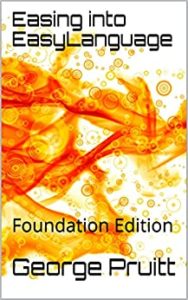Update To Original Pattern Smasher
What will you learn : string manipulation, for-loops, optimization
Before proceeding I would suggest reading my original post on this subject. If you believe the relationship of the last few bars of data can help determine future market direction, then this post will be in you wheel house. Another added benefit is that you will also learn some cool EasyLanguage.
Original post was limited to four day patterns!
This version is limitless (well not really, but pretty close). Let’s stick with the original string pattern nomenclature (+ + – – : two up closes followed by two down closes.) Let’s also stick with our binary pattern representation:
| Pattern # | 2^3 | 2^2 | 2^1 | 1 |
| 3 | 0 | 0 | 1 | 1 |
| 4 | 0 | 1 | 0 | 0 |
| 5 | 0 | 1 | 0 | 1 |
| 6 | 0 | 1 | 1 | 1 |
Remember a 0 represents a down close and a 1 represents an up close. We will deviate from the original post by doing away with the array and stick with only strings (which are really just arrays of characters.) This way we won’t have to worry about array manipulation.
How to create a dynamic length string pattern
This was the difficult part of the programming. I wanted to be able to optimize 3, 4 and 5 day patterns and I wanted to control this with using just inputs. I discovered that pattern three is different in a three day pattern than it is in a four day pattern: in a three day pattern it is 011 or – + + and in a four day pattern it is 0011 or – – + +. Since I am counting 0’s as down closes, pattern #3 depends on the ultimate size of the pattern string. No worries I will have eventually have another version where I utilize a different value for down closes and we can then have holes in our string patterns. But I digress – so to differentiate the patterns based on the pattern length I included a maxPatternLen input. So if maxPatternLen is three and we are trying to match pattern #3 then we will be looking for 011 and not 0011. That was an easy fix. But then I wanted to build a string pattern based on this input and the pattern number dynamically. Here is some psuedo code on how I figured it out.
Now if you want to optimize then you must make sure your pattern number search space or range can be contained within maxPatternLen. For example, if you want to test all the different combinations of a four day pattern, then your maxPatternLen would naturally be four and you would optimize the pattern number from 0 to 15. Don’t use 1-16 as I use zero as the base. A five day pattern would include the search space from 0 – 31. The rest of the code was basically hacked from my original post. Here is the rest of the code to do optimizations on different length pattern strings. Notice how I use strings, for-loops and comparisons.
Also see how I incorporate a profit target and protective stop. I use the built in BarsSinceEntry function to count the number of days I am in a trade so I can utilize a time based exit. Here is an interesting equity curve I developed using a two day pattern ( – –) to go long.
Register on the website and I will email you an ELD of the improved Pattern Smasher. Or just shoot me an email.






